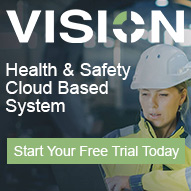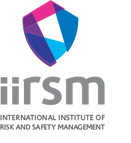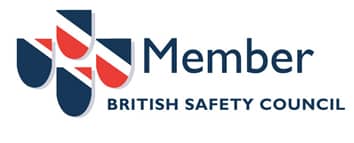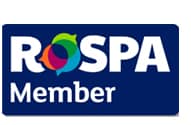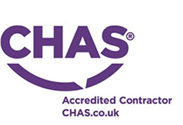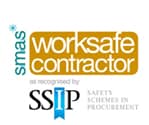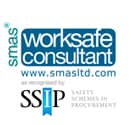Everything You Need to Know About LOLER Regulations in the Workplace
Ensure your business complies with LOLER regulations. Learn what a thorough examination is, inspection frequency, and employer responsibilities. Get expert advice from C&C Consulting.
If your business involves lifting equipment, understanding and complying with Lifting Operations and Lifting Equipment Regulations (LOLER) is essential.
Simply, LOLER is about making sure lifting equipment is safe to use and that lifting operations are properly planned and carried out.
Here at C&C Consulting, we are a leading provider of health and safety consulting services, and we help organisations to remain legally compliant. This article will answer your initial questions about LOLER, but please do get in touch so we can advise your organisation on LOLER obligations efficiently and effectively.
What is LOLER?
LOLER, short for Lifting Operations and Lifting Equipment Regulations, is a set of specific regulations enacted under the Health and Safety at Work Act 1974. This is to ensure the safe use of lifting equipment in workplaces.
What are the core principles of LOLER?
- Safe Equipment – must be strong, stable and regularly inspected.
- Competent People – operators and planners must be trained and experienced.
- Planned Operations – every lift should be properly risk-assessed and executed.
By following these principles, you reduce risk, ensure compliance and protect your workforce.
Why was LOLER introduced?
The aim is to prevent accidents and injuries caused by lifting equipment. It ensures all equipment is:
- Suitable for the task
- Properly maintained
- Thoroughly examined
- Used by competent personnel
LOLER places duties on employers, the self-employed, and anyone controlling the use of lifting equipment.
What Equipment Is Covered Under LOLER?
LOLER applies to any equipment used for lifting or lowering loads, including the attachments and accessories used in these operations.
Examples include:
- Overhead cranes and gantry cranes
- Forklift trucks and telehandlers
- Car lifts
- Mobile Elevating Working Platforms (MEWPS)
- Patient hoists and slings (healthcare)
- Rigging and lighting lifts (events)
- Access platforms (utilities)
- Maintenance hoists and winches (facilities management)
Equipment not covered under LOLER includes some types of pallet trucks and roller shutter doors, as they fall under PUWER (Provision and Use of Work Equipment Regulations).
What is a ‘Lifting Operation’ and how should it be planned?
LOLER defines a lifting operation as any activity involving the lifting or lowering of a load, including people. Essentially – what you want to lift and how you are going to lift it.
Planning must cover:
- What is being lifted
- How it will be lifted
- Who is responsible
All lifting operations must be:
- Planned by a competent person
- Supervised appropriately
- Carried out safely
Different types of lifting operations require different levels of planning.
For example – mobile and static crane lift plans require significantly more consideration and detail than a generic telehandler lifting plan, using the fork tines. Telehandlers may carry out a crane lifting operation by under-slinging a load from the fork tines, requiring additional considerations in the preparation of a suitable lifting plan, which will include the specific training for the telehandler operator.
C&C Consulting can help in the preparation of a basic lift plan, or answer any queries you may have about your LOLER lift plan.
Who writes the lift plan for LOLER?
A competent person, often referred to as the ‘appointed person lifting operations’. This ‘appointed person lifting operations’ is responsible for ensuring a lifting operation is planned, and executed in compliance with a Lifting Plan. This Lifting Plan will have been prepared specifically for the lifting operation(s).
Who is a competent person under LOLER?
A competent person under LOLER is a person who possesses the necessary knowledge, experience, and objectivity to ensure the safe use of lifting equipment.
Can I do my own LOLER inspection?
Technically yes, but only if you or your staff meet the definition of competence and have adequate insurance cover.
It is the employer’s duty to ensure that it employs a suitably qualified competent person to conduct the thorough examination, therefore employers often engage LOLER inspection suppliers to carry out the task. Notwithstanding that the majority of insurers insist LOLER, thorough testing, examinations and inspections are carried out by reputable third parties.
What is a thorough examination for LOLER?
A thorough examination is a statutory inspection conducted by a competent person. This is often a requirement for insurance providers.
This inspection determines if the lifting equipment:
- Remains fit for purpose
- Is safe to operate
- Has not deteriorated due to environmental or operational conditions
How often does a LOLER inspection need to be conducted?
Every 6 months for equipment lifting people or accessories – e.g. slings, shackles, hooks, straps etc.
Every 12 months for other types of lifting equipment.
Load test included within the thorough examination.
What are the consequences of not complying with LOLER?
Ignoring LOLER regulations can lead to serious consequences:
- Fines and legal action – Health and Safety Executive (HSE) may issue prohibition or improvement notices, or prosecute.
- Insurance impacts: Your insurer may require LOLER compliance for cover to be valid.
- Civil Claims – If an employee is injured due to equipment failure, you may face costly compensation claims.
- Operational damage – failures can lead to equipment damage, production downtime, and reputational harm.
Examples of failures leading to Accidents:
- Crane Collapses – A crane collapsing at a dockyard or construction site can have severe consequences, including fatalities.
- Hook Loader Failure – A failed lifting arm on a hook loader vehicle can lead to the ejection of a skip, potentially injuring workers.
- Improper Use of Lifting Slings – Nearly all failures of synthetic fibre lifting slings are due to improper use, rather than manufacturing defects.
- Overloading and Exceeding Weight Limits – Exceeding the manufacturer’s recommended weight limit can strain equipment and increase the risk of failure
When is a LOLER inspection Required?
Thorough examinations are required:
- Before first use
- After installation or reinstallation
- After exposure to conditions causing deterioration
Records must be kept and made available for at least two years. Any defects must be reported to the equipment user, the equipment owner, and enforcing authorities such as HSE.
What types of equipment must be marked and how?
LOLER mandates that all lifting equipment and accessories must be clearly marked with their Safe Working Load (SWL). If SWL depends on configuration (e.g. crane arm positions), this must be shown. Accessories should also include details that affect safe use, such as:
- Weight
- Load distribution
- Maximum capacity
LOLER vs PUWER: What is the difference?
LOLER and PUWER often overlap, but they serve different purposes:
LOLER – Specifically applies to lifting equipment used to lift / lower loads.
PUWER – Applies to all work equipment used at work (excluding specific lifting use covered by LOLER).
If equipment does not perform lifting or lowering as its main function, PUWER will usually apply.
What equipment does LOLER not apply to?
- Some types of pallet trucks
- Roller Shutter Doors
These are not covered under LOLER and instead covered under PUWER as they are not primarily designed for lifting operations.
Get in touch with C&C Consulting
Do not leave LOLER compliance to chance. Contact our expert consultants at C&C Consulting to help you meet regulatory obligations with confidence.
Call us on 01525 309 807 or send a LOLER enquiry here.


